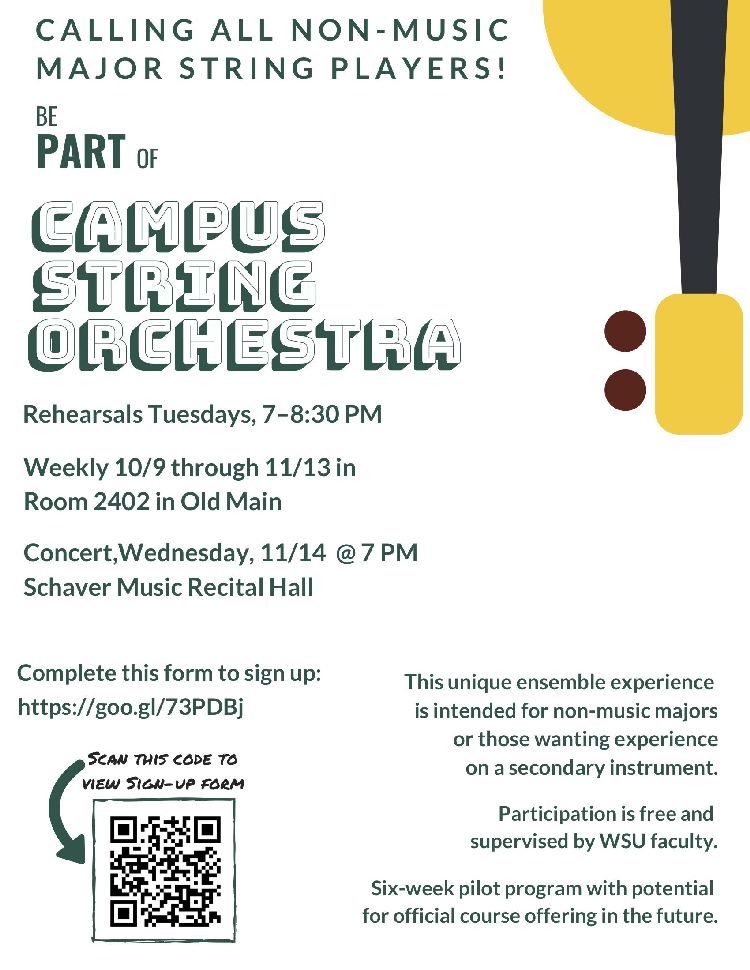Innovating in music education
Innovation is not just a buzzword to me—it's a vital aspect of my ongoing professional practice. To be innovative requires the creativity to start something new, the alertness to see when it is necessary, and the courage to make the experiment. It is the teacher's straightforward responsibility to live up to these standards. Following are some examples of times when I think I did so.

The Campus String Orchestra
For the first two years of my college studies, there was no music class for amateur-level string players at Wayne State University. The closest offerings from the University were the Campus Band (which excluded violinists, violists, cellists, and bassists) and the Symphony Orchestra (which targeted music majors, requiring a huge time commitment and advanced skills). I noticed this void, and set out to fill it.
Launching the Campus String Orchestra—the music class reimagined as a club—was no small undertaking. It entailed weeks of discussions with various stakeholders (particularly Department of Music staff and faculty, whom I hoped to convince to take the project under their wing if it proved successful), a multi-pronged recruitment campaign, arranging instrument loans for all students who needed them, creating lesson plans, obtaining sheet music, setting up rehearsal and performance spaces, and promoting concerts. But it came off. Thirty diverse participants joined the first semester, in addition to myself and the other Music Education majors I recruited to help teach.
Since then, the Campus String Orchestra has become a registered student organization, importing the college a capella model to the orchestral world. Though I stepped down from the leadership after two years, it is my hope that the organization will continue to self-sustain into the future.
“I really liked CSO because I was able to continue to play my cello—which is something I've been doing since middle school—even though I don't have the skill level to play in the university orchestra. The music and people and the way the CSO was set up was amazing and I had a wonderful time!” —Supriya, cellist/ public health major
Adapting to the COVID-19 era
The timing of my teacher preparation program was extraordinary. Midway through my first semester of student teaching (in Winter 2020), in-person public schooling was abruptly suspended. My second semester (Fall 2020) took place during the height of the pandemic. I witnessed and participated in the reinvention of music education as experienced teachers labored to respond to the unprecedented situation.
At Livonia Frost Middle School, during professional development week before the fall semester, all teachers were asked to prepare a single day's emergency backup lesson plan. My mentor, Michael Rais, suggested that I do so separately from him. The easy solution was to prepare an activity that would keep students busy. To have meaningful learning, equally applicable to all classes, at an undetermined future time... and keep students engaged and manage pacing during the lesson...
Well, that could not happen without some innovation.
The lesson plan I created combines prerecorded teaching (in which I greet as old friends the students whom, at the time of recording, I had yet to meet), simple instructions for a substitute teacher to lead a group discussion, a period of individual work (calculated to make the students think creatively), and a digital worksheet as an assessment tool, in a uniquely seamless sequence. The video portion of the lesson is here attached.